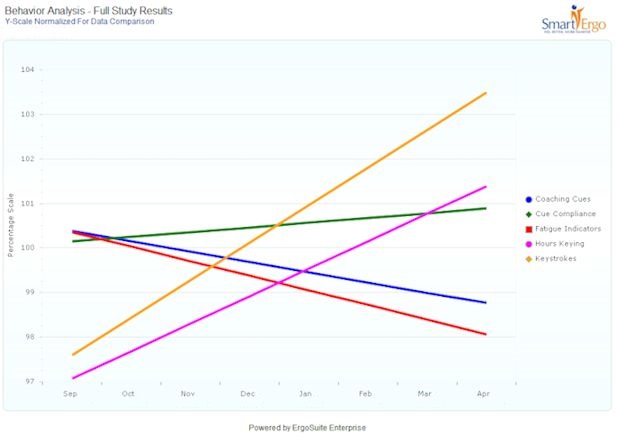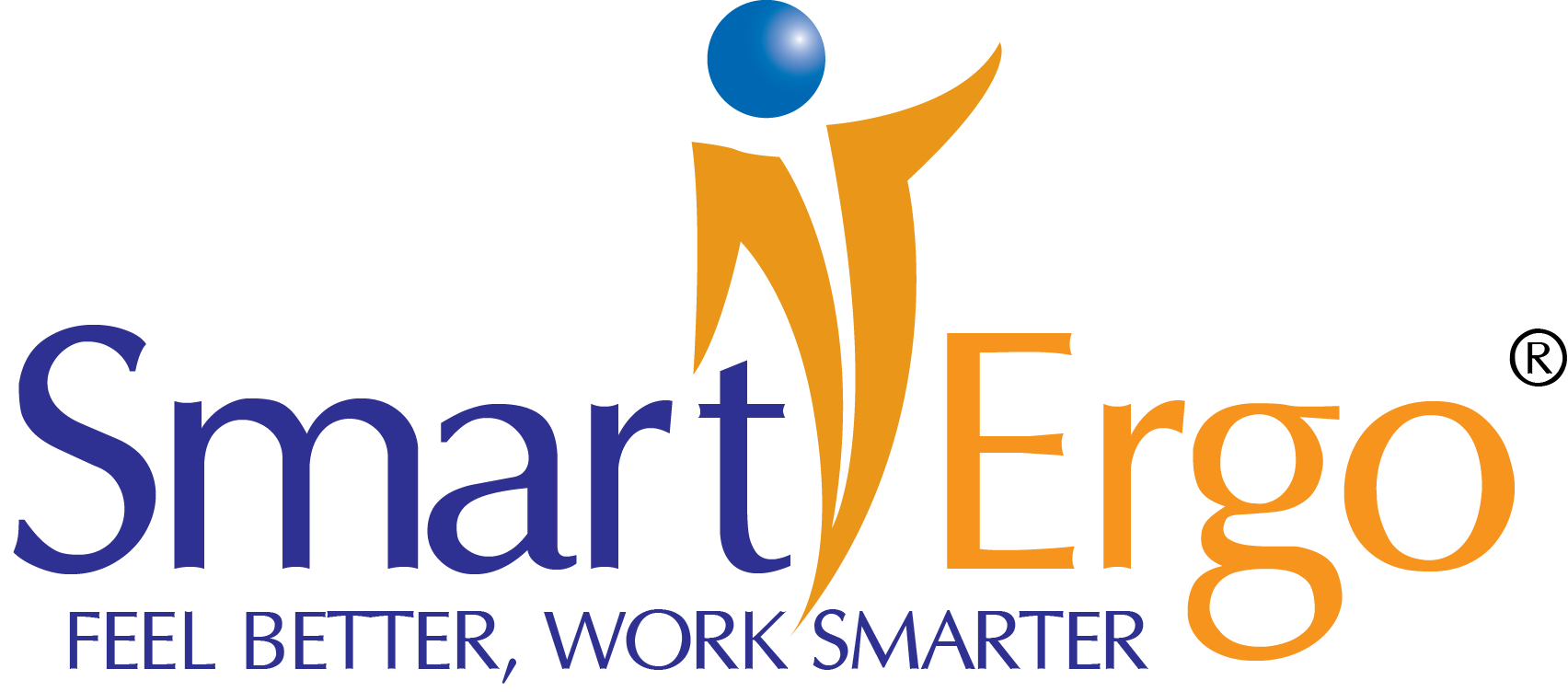
As a safety professional caring for your fellow employees, you’re well aware of the long-studied effectiveness of Office Ergonomics Best Practices on knowledge workers’ comfort, safety, productivity and wellbeing. There is, however, another benefit of these Best Practices which relates to mitigation of Digital Fatigue which has been rigorously studied over the past twenty years, including its prevalence increasing substantially over recent years.
Your intrepid author has been reviewing numerous studies, including a 2025 literature review study published in Environment and Social Psychology: “The Impact of Digital Fatigue on Employee Productivity and Well-being: A Scoping Literature Review“, which explained “Digital Fatigue, a highly prevalent condition arising from prolonged engagement with digital tools, significantly affects employee productivity and well-being.”
Some of the clear impacts of Digital Fatigue which have been rigorously studied include:
- Cognitive & Emotional: Stress, mental overload, irritability, burnout (~ techno-overwhelm)
- Physical Health: Eye strain, neck/back discomfort, insomnia, muscle tension, musculoskeletal disorders
- Performance & Productivity Reduced focus, productivity loss, higher error rates, diminished creativity
- Sleep & Recovery: Sleep disturbances worsening daytime functioning and efficiency
- Security & Risk: Heightened susceptibility to phishing, poor cyber decisions
The issue of Digital Fatigue, also known as Digital Burnout, is not new to 2025. In 2019, the World Health Organization (WHO) officially recognized the condition as an “occupational phenomenon” that influences worker health status.
We’ve already reviewed numerous studies confirming how workplace stress plays an integral role in the development of Workplace Musculoskeletal Disorders (see prior articles).
Beyond that, an insightful article “How Digital Fatigue Turns Employees into Cyber Risks“, reports that the danger of digital fatigue in modern workplaces isn’t merely a health, well-being or productivity concern—it is a ticking time bomb for cybersecurity. From the article:
- According to CybSafe, 54 percent of today’s office workers are turning a blind eye to cybersecurity alerts. The consequence? A decline in engagement with cybersecurity training and an alarming increase in risky online behaviors.
- The consequence? A decline in engagement with cybersecurity training and an alarming increase in risky online behaviors.
- The CybSafe report not only highlights the prevalence of digital fatigue but also exposes the dangerous consequences of compromised cybersecurity practices.
- A concerning 36 percent of respondents admit to occasionally cutting corners when it comes to adhering to cybersecurity protocols. This includes skipping essential steps such as using secure networks or setting strong passwords, all in the pursuit of saving time and effort.
- Even more alarmingly, 7 percent of employees admit to frequently bypassing crucial cybersecurity measures. When digital fatigue leads to a blatant disregard for security protocols, organizations are left vulnerable to cyber threats that could otherwise have been prevented—and that no doubt they thought they had prevented with training.
We expand our attention to a case study of a large population of knowledge workers using ErgoSuite over time. Among the confirmed benefits of ErgoSuite delivering actionable Best Practices of Office Ergonomics, we see the clear decline in Fatigue Rates as one of the results.
Case Study – 363,326,775 Observations
Yet another extensive research project is presented, specifically analyzing 363,326,775 keystrokes and mousing seconds belonging to a large population of employees. Here is live data underlying an ErgoSuite chart analyzing seven month’s usage of ErgoSuite’s Employee Tools by a large population including a diverse spectrum of job functions:

Above, we’re looking at an actual ErgoSuite Enterprise chart where we’ve chosen to view Trend Lines (Least Squares Linear Regression) which model live underlying data. Used throughout data analysis and in mathematics, these lines represent the actual underlying data’s movement over time. Of course, raw data is never as smooth as the trend lines because it ebbs and flows over time traversing seasonality such as reduced activity during holidays, however, the trend is clear and reliable. Linear regression is an invaluable tool widely used for modeling trends from complex data sets. Within this graphical report:
- ErgoSuite is modeling live data specifically examining (1) Keystrokes, (2) Hours Keying, (3) Employee Fatigue, (4) Coaching Cues from ErgoSuite Coach and (5) Cue Compliance which is a measure of an employee’s adherence with coaching cues supporting an organizational best practice.
- These coaching cues are only required when an employee’s “recovery time as a function of duration and repetition” is inadequate (high risk).
- Each metric in the chart is indexed to its initial value, for comparability, showing its trend (growth) over the period. For example, seeing Cue Compliance grow from an index of 100 to 101 simply means its growth has been 1% from its initial monthly value and does not imply that compliance is above 100%.
- In fact, the overall Cue Compliance for this specific population of employees was solidly within the 90%-100% range throughout the period.
- The average number of observations ‘per employee’ underlying ‘each’ trend line is more than 84,000 over the seven month period.
- This employee population spans the spectrum of low, medium and higher computer-usage.
- In addition, we know from other collected live data analyses that when employees develop new good ergonomic behaviors at work, these learned behaviors carry on after work when using the computer at home.
The Many Sides of The ErgoSuite Value Delivery
- On one side, ErgoSuite delivers actionable Office Ergonomics Best Practices, proven over time, for employees using computers in their work.
- On another side, regardless of what you use to deliver Office Ergonomics values, ErgoSuite delivers an empirical framework clients use to measure the state of Office Ergonomics, feeding into an unparalleled reporting capability.
- In fact, we've seen many clients successfully use ErgoSuite to monitor any changes in the workspace including when a client is exploring new adjustable furniture and equipment, they set a baseline first and then pilot the prospective furniture or equipment to empirically measure the before-after relationship.
- In addition, clients can easily establish a baseline model of organizational Office Ergonomics metrics and set ErgoSuite to automatically alert them about trends of interest - so they can analyze the threats, identify root cause and proactively mitigate the issues.
After all, one of the first fundamental things we learn in our professional careers is that “if you can’t measure it, you can’t management it”.
When employees develop automatic good ergonomic behaviors (habits) including working in neutral postures, providing brief recovery time during work with movement and gentle stretching and breaking up harmful prolonged periods of static postures, they’re more comfortable and work at a lower risk profile – and they fatigue at a slower rate.

